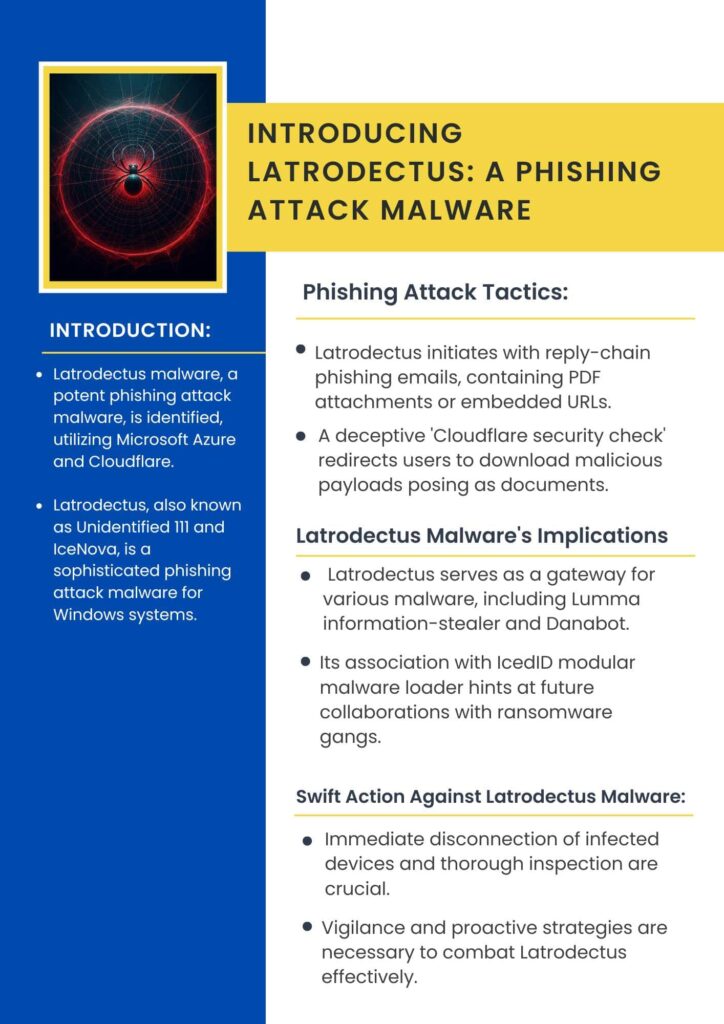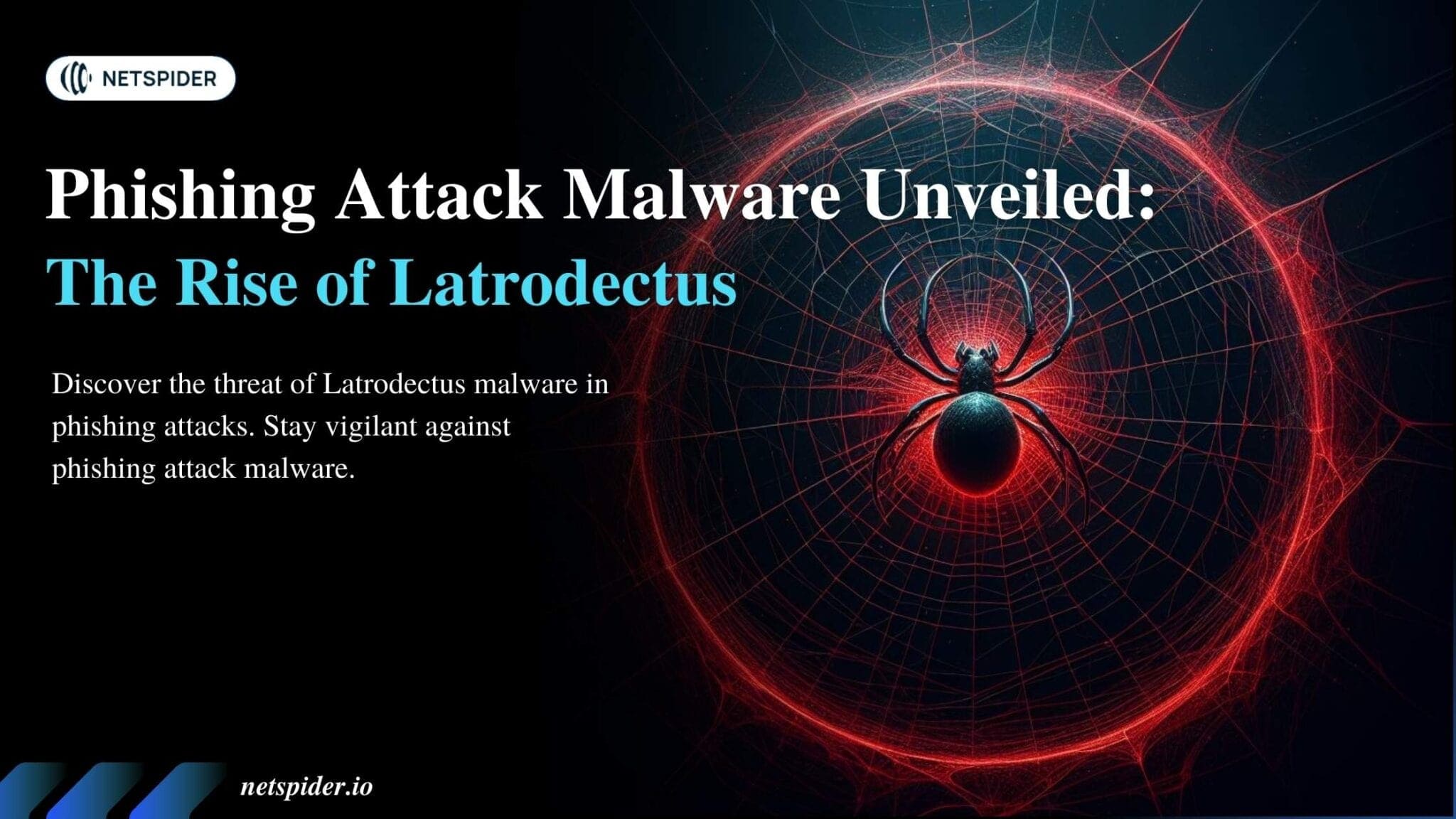A new menace has emerged in cybersecurity threats, instilling fear among security experts and businesses. Latrodectus malware, identified as a potent phishing attack malware, has surfaced through sophisticated phishing campaigns. This malicious entity exploits the credibility of Microsoft Azure and Cloudflare and conceals its malevolent agenda.
Introducing Latrodectus: a Phishing Attack Malware
Initially discovered by Walmart’s vigilant security team and scrutinized by industry experts, Latrodectus, also known as Unidentified 111 and IceNova, emerges as a sophisticated phishing attack malware for Windows systems. As a clandestine gateway, Latrodectus operates surreptitiously within compromised systems, primed to execute commands or download additional malicious payloads such as EXE and DLL files.
What distinguishes Latrodectus is its adept use of reputable platforms like Microsoft Azure and Cloudflare to distribute its nefarious payload.
By camouflaging itself as harmless PDF attachments or embedded URLs hosted on these platforms, Latrodectus eludes detection by conventional email security measures, enabling its seamless infiltration into corporate networks
Latrodectus Malware’s Phishing Attack Tactics
The modus operandi of Latrodectus begins with reply-chain phishing emails, wherein threat actors hijack existing email threads to lend an air of authenticity to their nefarious schemes. These emails, laden with PDF attachments bearing innocuous names like ’04-25-Inv-Doc-339.pdf’, lure unsuspecting victims into believing they are accessing legitimate documents hosted on Microsoft Azure’s cloud infrastructure.
Upon clicking the seemingly harmless ‘Download Document’ button, users are redirected to a deceptive ‘Cloudflare security check’ designed to thwart email security scanners. This faux captcha, disguised as a simple math question, is a gateway to the final payload. Upon successful completion, a JavaScript file posing as a document is automatically downloaded, initiating the installation process.
The downloaded JavaScript, obfuscated to evade detection, contains a hidden function responsible for extracting and executing a script to download an MSI file from a hardcoded URL. Once installed, the MSI file drops a DLL into the system’s %AppData%\Custom_update folder, which is subsequently launched, unleashing the full force of Latrodectus malware onto the compromised system.

Phishing Attack Malware’s Grave Implications
Once Latrodectus, a sophisticated phishing attack malware, gains access to a system, it remains clandestine, silently running in the background, ready to execute commands or install payloads. Its implications are profound, as it is a gateway for many other types of malware, including the Lumma information-stealer and Danabot. Additionally, its connection to the IcedID modular malware loader suggests the possibility of future collaborations with ransomware gangs, which could cause significant harm to unsuspecting victims.
Swift Action Against Latrodectus Malware
Prompt action becomes crucial after looming threats like this phishing attack malware. If a device falls victim to Latrodectus infiltration, it’s vital to swiftly disconnect it from the network and meticulously inspect for any indications of compromise. Only by remaining vigilant and implementing proactive strategies can we effectively combat this persistent foe and shield our digital assets from malicious clutches.

Source: bleepingcomputer
